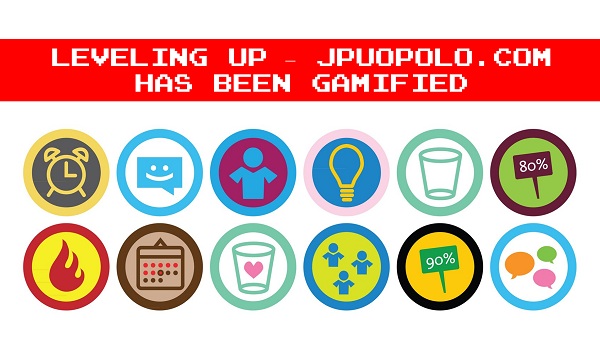Here I sit, in an airplane on the tarmac of Miami International Airport. Our flight home should have left the ground over an hour ago. My wife is next to me, just about ready to climb out and start pushing the plane herself. I am annoyed and frustrated, and anxious to be winging our way back home. With any luck, we will be in the air by the time I finish this post and I can deride a company for the first time while at 30 000 ft. altitude. We almost never fly American Airlines (mostly because of my addiction to Star Alliance’s customer loyalty program!), but this flight was booked for us by our cruise line, leaving us little choice in the matter. However, I will not be returning to American Airlines anytime in the near future, and I’d like to outline why. We just finished a lovely 10-day cruise and headed to Miami International Airport. We were already rather annoyed by the fact that our flight would not be leaving for 7 hours after our transfer from the ship arrived at MIA (although this is not the fault of AA, but rather poor scheduling by the cruise line), but we decided to make the best of it. Both my wife and I were quite anxious to get home to our lovely daughter. Take-off time couldn’t come soon enough! Our headaches began in the check-in line. Firstly, it was woefully understaffed by probably the surliest group of individuals I have ever met. It was as if I just met the 7 dwarves, except they were all named Grumpy. I went to ask them some basic questions, only to be shuttled back and forth as they decided whose responsibility it was to answer my basic question. Instead of just answering us about check-in details, we were throttled about like a bloody ping-pong ball from line to line. The net result? Sitting in lines with our luggage for another 2 hours before we could check-in. Once we actually got to the Express Check-in, we were greeted by the unfriendliest piece of software that I have ever seen. Rather than taking the pieces of information that were already entered into the system, they required us to manually re-enter everything. Having just read the Steve Jobs book, and being captivated by his attention to detail and user experience, I could only imagine what his reaction to this system would have been. After 2 attempts and 10 minutes we finally got our boarding passes. (Oh wait, looks like we are about to take off) Next we were off to the lounge to wait...
Read MoreEver since game dynamics really took center stage with things like Foursquare, I have become very interested in how people become so quickly enticed in to getting badges and earning points. There are have been other companies who have taken gamification to websites. Two companies, specifically Badgeville and Bigdoor, have caught my attention. I will be writing a detailed article on both. In the interim, I have decided to gamify my website using Big Door’s plug-in. Now by interacting with my site you can earn points. Right now you can’t use these points for anything (I am still figuring that part out). If you want to earn some points you can start by: Checking In using the bar below (10 points) Commenting on any article (15 points) Liking my page (10 points) I am still experimenting with Gamification, but would like your input on how I could either improve the experience and make gamification a worthwhile addition to my site. I would encourage you to to interact with my site and see game dynamics in...
Read More1. Create several key use cases for people to use your site – Why are people on your site? You spent energy getting them there, so now what? I always advocate to create a really few well-defined and streamlined use cases. You may already have a working site or be in the process of designing it from scratch. Ask yourself this question: If a visitor to your site was a tourist, what would you like them to see in your “site” or “city”? Are you sending them to a bad neighbourhood, or are they seeing the sights? Here are some examples of use cases: Get them to sign-up Find out more about your service/product – watch a video or read more Get them to purchase or sign up for your product/service These seem simple stupid, but it is shocking how many sites (especially web start-ups) don’t seem to have simple use cases defined to push people to these important steps. Don’t be one of those sites, make sure you have tightly defined use cases and your website is tuned around them. 2. Make it super easy for them to sign-up, so you can get their information – When a person comes to your site and is about to make the leap of faith to share information, make sure you are there for them. This is a big psychological leap for many; you need to make sure you do the right things to help them take the next step. Here are a few suggestions: Keep your form clean (don’t ask for information you don’t need) – People don’t want to feel like they are doing their taxes by entering countless pieces of personal information. Keep things lean and mean, get some initial buy-in and you can always ask more questions after you get to know them. Think of it like dating. Add options like Facebook or Twitter connect – This has become a no-brainer these days. Gone are the days where some get uber-concerned about their personal profile (well some people at least). It is amazing how the click of one button vs. filling out a form has reduced inhibitions to share information. Style sometimes means substance – People are used to the finer touches when it comes to UI. This could be a refined button, and it could be AJAX/JS pop-ups. The days of boring Post forms are dead. Take a little bit of time and even a bit of money on your primary form to ensure it looks the part in today’s web. People are not only looking for these refinements, they are expecting them. The bar is...
Read More1. Minimal Viable Product thinking can be a trap – there has recently been a huge movement toward creating a “minimum viable product” and then going out to market as quickly as possible. I would argue it is important to temper this trend. This has turned into a tendency to quickly roll out half-baked functionality because developers believe they are following the MVP mantra. Well thought out features that deliver value, even if they take a bit longer to come to market, will (in my opinion) deliver more ultimate value to the product and to the user experience. I am all for iterating something early on once it is in the hands of the customer, but I would argue that some companies have misconstrued this and roll out an untested, half written piece of functionality 2. Keep an eye on what really matters – Many good product managers fight with this all the time. How many times do people from different lines of business ask questions like “wouldn’t it be cool if it could do this?”. When I really boil it down, there are only 3 reasons why you should build any given feature in an early-stage start-up. Here they are: It will help make money – If you are a start-up working towards break-even, then this needs to be ever present in every decision you make. If it won’t help move the needle and get you closer to profitability, you may want to reconsider it. I come from a school of thought in which you want straightforward business models with a straightforward path to cash. There are few out there with unlimited runways and you always need to be concerned with this in your approach. It will improve the user experience – User experience has become such a core function to any product manager. Is this easy to use? Do people get pissed off when they have to use key features on the site? Will it cause people to abandon your site? UX can be a core competency and key differentiator. Always focus on this! Even if it is as simple as a nicely done pop-up or a cleanly designed button, it all matters when it comes to UX. It will improve efficiency and scalability – Will this feature allow you to do more with less, does it allow you to hold off hiring more people to do the same function, or does it make the people you have more effective? You should always consider this to stay lean and mean as possible 3. Create a vision for the product – it is important to not limp forward from...
Read More


